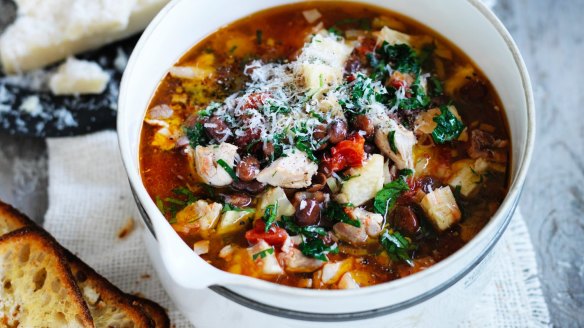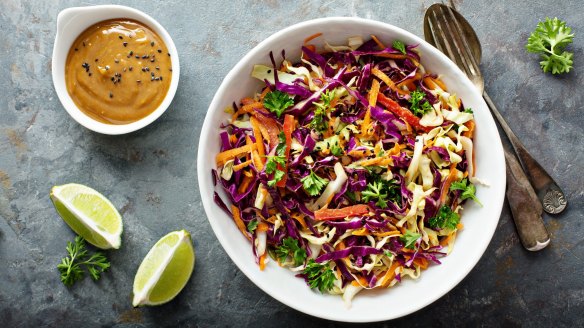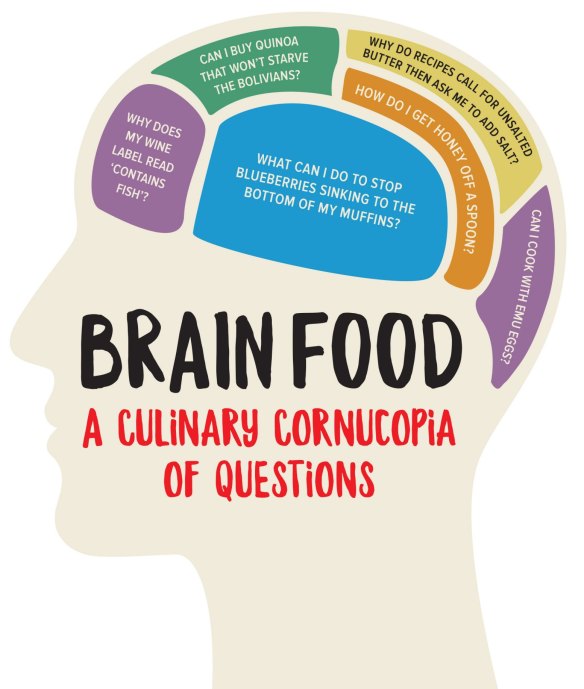How to stop soups and stews from catching on the bottom of the pot

I'm doing pea and ham soups and curries in my big Le Creuset pot on a gas stove and I'm having problems with the food catching on the bottom. What causes catching? Are there ways to prevent it or stop it when it starts? P. Fyfe
"Bugger!" It's the catch cry of every home cook when they discover their food has caught on the bottom of the pan. What is happening is that starch and protein from the dish you are cooking begin to bond with the base of the pan through which the heat is transferred. This heat transfer point is much hotter than the rest of the liquid, which will only reach 100C – the boiling point of the water in it.
At first the starch and protein form new compounds in what is known as the Maillard effect. Then, if not swept away by the deft stroke of a wooden spoon, the compounds will begin to carbonise. On this rough surface, more starch and protein will accumulate and soon you will have a blackened crust.

How to avoid it? Keep an eye on your cooking and make sure there is enough liquid in the pot. Stir regularly and frequently to stop the build-up on the bottom of the pan. Use a heavy-based pan that evenly distributes the heat. Consider investing in a heat diffuser as almost all pans have hotter and cooler spots. Turn the heat under the pan to low.
This winter I was making pea and ham soup and discovered I'd run out of split peas. I removed the slow-cooked ham hock and bay leaves from the pot and poured a bag of frozen peas into the stock. I removed the flesh from the hock, returned it to the pan, cooked the peas and hock together for just 10 minutes, checked for seasoning and blitzed the lot in the blender. It was superb, smooth and creamy, and because the peas had cooked so quickly, there was no time for them to catch.
Cabbage smells when I cook. A. Oliver

Then don't. Eat it raw. And eat lots of it. It is so good for you. When you cook it, particularly for a long time, this creates the perfect conditions for the breakdown of the beneficial sulphur compounds, the ones associated with a reduction in certain cancers in people who eat a lot of cabbage, into stinky hydrogen sulphide. Rotten egg gas.
Cabbage is perfect for pickling and fermenting. It is perfect for finely shredding or chopping and mixing with other vegetables and dressing to make the perfect accompaniment to grills. Use purple cabbage, grated carrot, parsley and red capsicum to make a coleslaw.
The best way to cook cabbage to retain its flavour, colour and stop the kitchen from smelling is to chop the cabbage leaves into matchbox-sized squares or diamonds and cook in a wok with a little oil. You could start by frying some speck, then some finely sliced pieces of granny smith in the hot fat and then the cabbage. Add a little salt and pepper, perhaps a pinch of caraway seeds. Serve with a grilled pork chop. Your home won't be ruined by the smell of rotten egg gas at dinner but quite possibly could be later on, depending on your metabolism.
Send your vexing culinary conundrums to brainfood@richardcornish.com.au or tweet to @Realbrainfood.
Brain Food by Richard Cornish is out now from MUP (RRP $19.99, eBook $11.99)
Appears in these collections
The best recipes from Australia's leading chefs straight to your inbox.
Sign up- More:
- How to
- Brain food
